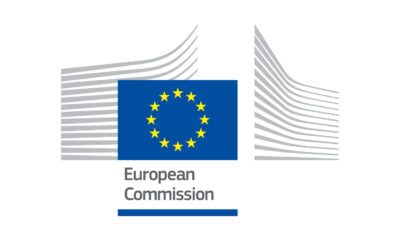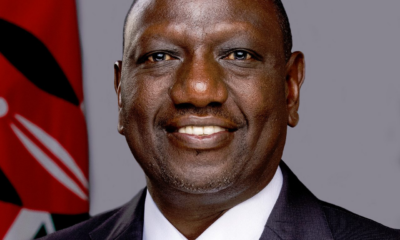Travel
Airport theory, seat squatters and check-in chickens: Why these viral travel trends are a disaster
Cabin crew can remove you from flights and gate agents can deny you boarding for disobeying rules.
Social media loves a travel hack. While some are clever, many are questionable – and a select few are so misguided they might even leave you stranded at the airport.
In recent months, travel trends such as airport theory, seat squatting and playing ‘check-in chicken’ have taken the online world by storm. Are they genius shortcuts or guaranteed disasters? Euronews asked airline experts to weigh in.
Spoiler: they’re not impressed.
Airport theory: The fast track to missing your flight
The idea behind airport theory is simple: arrive at the airport as late as possible – ideally 15 minutes before departure – because airlines supposedly overestimate boarding times. If successful, it means less waiting and more time spent elsewhere.
There’s just one problem: it’s a terrible idea, according to aviation experts.
“Super dumb,” says Keith Van, a community manager at Seats.aero.
“If you show up at the flight with 15 minutes or less to spare, it’s extremely stressful for the gate agent to process if you’ve already been offloaded and your seat has been given away.”
And Van should know – he flies so often that he has earned ‘EuroBonus Millionaire’ status with the SkyTeam network, one of the world’s three major airline alliances.
Gate agents, he adds, are very willing to offload absent passengers – and have every right to deny you boarding. And if you think there was a mistake made by the gate agent, Van assures you there almost certainly was not.
“It’s nearly impossible to assign two people to the same seat under live reservation systems,” he explains.
Airport theory can hit you where it hurts – your wallet
“Even if this hack works nine times out of ten – it won’t – that tenth time won’t be worth the hassle. You will have to book a new flight, but certain destinations have limited flights, and they may be full,” adds Addie, a long-haul flight attendant for a major airline who asked to use a pseudonym.
“If you have not boarded by the time boarding closes, ground staff will not hesitate to offload you. Airlines pay enormous amounts for gate rental, and every minute longer than necessary the aircraft sits at the gate, the more money it costs the airline.”
Rather than a hack, airport theory could be an extremely effective way to end up paying for a whole new flight.
Why seat squatting is a one-way ticket to arguments
If you want an upgrade without paying for it, sit in a better seat and hope nobody notices.
That’s the logic behind seat-squatting, a trend where passengers occupy more desirable seats – extra legroom or a window view – and wait to see if anyone challenges them.
But those seats almost certainly belong to someone else.
“On fuller flights these days, that seat has already been probably booked by someone else,” says Van. “If it leads to an argument, the flight attendant on board will always check boarding passes to see who is supposed to sit where.”
And when flight attendants tell you to move, you must listen to them.
“If you don’t, you’re breaking aviation laws in many jurisdictions, and the captain or crew can boot you off the flight,” he adds.
If you refuse to follow the rules, you might be met by police once you’re off the plane.
Flight attendants will not hesitate to remove you for breaking the rules
“I can tell you personally that if a passenger was refusing to move from someone else’s seat to their own I would not allow them to fly,” says Addie.
“As a condition of carriage, which every person agrees to when booking their flight, cabin crew need to be confident that passengers will follow instructions in an emergency, so an inability to follow a simple instruction like ‘sit in the seat you were assigned’ is reason enough to be removed from the flight.”
There are several valid safety reasons for following the rules, she says. Seat squatting, for example, can disrupt a plane’s weight balance.
“Different zones in the aircraft are required to have different proportions of passengers depending on the weight of the freight being carried in the hold. When you hear the announcement saying that the flight crew are completing their paperwork, this is one of the things they’re checking,” she explains.
If you want to move after take-off and the seat belt signs have been turned off, just ask a flight attendant. Otherwise, she says, sit where you’re told.
‘Check-in chicken’ is like playing roulette with your seat assignment
‘Check-in chicken’ is a kind of game that has gone viral on social media where travellers deliberately wait until the last possible moment to check in, hoping to score an unsold premium seat instead of being assigned the middle seat of doom.
It’s high risk, high reward, according to experts, with an emphasis on the risk.
“This is actually real,” admits Van.
“Many carriers do random seat allocation. Low-cost carriers like Ryanair will allocate middle seats to passengers to entice them to buy upgrades. Even legacy carriers [might] save unsold rows with extra legroom until last. They may even check you in but designate you as an unselected seat and leave it to the gate agent to assign your seat.”
But not every airline follows these practices. US-based Southwest Airlines, for example, designates seat priority by check-in time – all the more reason not to buy into airport theory.
Some airlines that offer upgrades may use check-in time as a tie-breaker, too. So if you check in late, it may cost you a bump to a better seat, Van adds.
Don’t believe everything you see on TikTok
In the hierarchy of travel hacks, some ideas are genuinely useful.
Addie recommends wearing compression socks on long flights to prevent deep-vein thrombosis – a potentially fatal form of blood clotting – and drinking lots of water to stay hydrated, as it aids recovery.
Other hacks, such as airport theory or playing check-in chicken, are more likely to annoy airline staff, delay flights or leave you stranded. At worst, they can put you and your fellow passengers at risk.
“The most important thing to remember is that the cabin crew is there for your safety. Customer service is not our primary job,” Addie explains. “If you are being asked to do something, there is a reason behind it.”
To put it another way: if a travel hack sounds too good to be true, it probably is.
Travel
US mulls travel ban on citizens from 43 countries, including Russia — reports
US President Donald Trump’s administration is considering banning all travel to the country from 11 countries, the so-called “red list”. The other countries are in the “yellow and orange” lists, US domestic media reported.
The Trump administration is considering a new travel ban that could affect citizens from up to 43 countries, meant to address “national security and public safety threat,” reports claimed on Friday.
An internal memo seen by several US media outlets outlines a draft proposal for an expanded travel ban. The memo categorises countries into three tiers: red, orange, and yellow.
Citizens from the 11 countries in the “red” category would be entirely barred from entering the US. These countries include Afghanistan, Bhutan, Cuba, Iran, Libya, North Korea, Somalia, Sudan, Syria, Venezuela, and Yemen.
The list, put together by the US State Department, might be subject to change and still needs to be approved, reports noted.
Countries in the “orange” category would affect immigrant, tourist and student visas, with some exception. The list consists of Belarus, Eritrea, Haiti, Laos, Myanmar, Pakistan, Russia, Sierra Leone, South Sudan and Turkmenistan.
The countries in the “yellow” category would have 60 days to address concerns raised by Washington or risk being moved to one of the two more restrictive groups.
The category facing either indefinite travel ban or heavy restrictions list includes Angola, Antigua and Barbuda, Benin, Burkina Faso, Vanuatu, Gambia, the Dominican Republic, the Democratic Republic of the Congo, Zimbabwe, Cape Verde, Cambodia, Cameroon, Congo, Liberia, Mauritania, Malawi, Mali, São Tomé and Príncipe, Guinea, Saint Kitts and Nevis, and Chad.
The White House has not publicly commented on the reported memo.
The list comes on the back of an executive order Trump signed on 20 January, which says it would protect the country and its citizens from “aliens who intend to commit terrorist attacks, threaten our national security, espouse hateful ideology, or otherwise exploit the immigration laws for malevolent purposes.”
The order required several cabinet members to provide recommendations on which countries should be included in the travel ban, according to reports.
During a press briefing on Wednesday, US President Donald Trump was asked which countries might be included in a new list concerning the executive order. Trump declined to answer, stating, “Wouldn’t that be a stupid thing for me to say?”
Biden repeals, Trump reinstates
During his campaign, Trump promised to reinstate the travel ban, which gained significant attention during his first term.
Back in January 2017, one week into his presidency, Trump signed an executive order titled “Protecting the Nation From Foreign Terrorist Entry Into the United States.”
The order barred the entry of Syrian refugees into the US and temporarily suspended entry for individuals from Iraq, Iran, Libya, Somalia, Sudan and Yemen.
His 2017 decision led to chaos at airports and sparked protests nationwide over what its detractors dubbed the “Muslim ban”. Judges in several states quickly blocked the initial ban, citing discrimination against the countries on the list and violation of US immigration law.
The US Supreme Court later allowed a revised version of the ban, which continued to restrict entry for citizens from Iran, Libya, North Korea, Somalia, Syria, Venezuela and Yemen. The Court upheld the ban in 2018.
When US President Joe Biden took office in 2021, he repealed the travel ban, describing it as “a stain on our national conscience” and inconsistent with the country’s history of welcoming people of all faiths.
Travel
EU’s ETIAS travel authorisation delayed until 2026. Here’s when you’ll have to pay
The ETIAS will require visa-free travellers from non-EU countries, including the UK, to obtain authorisation before short stays in the Schengen Area.
This year, the new Entry/Exit System (EES) for the EU and Schengen Zone will finally be launched.
This will be a registration system for UK, US and other non-EU travellers and will only apply to those who don’t require a visa to enter the EU.
Coupled with this is the introduction of the ETIAS – the European Travel Information and Authorisation System – as part of the EU’s efforts to improve border security.
This travel permit was due to become a requirement for non-EU travellers in 2026, but it has been delayed yet again.
The EU now plans to introduce the ETIAS in late 2026 with a transitional grace period, meaning it won’t be mandatory until 2027.
What is the ETIAS?
Under the new ETIAS rules, travellers who don’t need a visa from non-EU countries, including the UK, will have to obtain authorisation before short stays in the Schengen Area.
This will require you to complete an online application, provide personal details, answer security questions and pay a €7 fee. This authorisation will be linked to the traveller’s passport and will be valid for three years or until the passport expires.
Travellers from 60 non-EU countries will need to comply with the ETIAS, but there are some exceptions. The fee will be waived for children under 18 and adults over 70, although they will still need to apply for authorisation.
When will travellers have to apply for the ETIAS?
The ETIAS cannot take effect until six months after the EES is fully operational at all Schengen Area borders. This means all airports, ferry ports and land crossings must have the system up and running before it can be launched.
Installing the new technology required for the EES has been dogged by complications and delays, with dozens of member states not ready for the planned launch.
As the EU has now decided on a phased rollout of the EES over a period of six months – coming into effect at the first borders in October 2025 – the introduction of the ETIAS has had to be pushed back.
It has said the ETIAS will start operations in the last quarter of 2026, with a specific date for the launch of the system coming a few months before. Even then it will remain voluntary for a further six months, meaning travellers may not have to pay the fee until well into 2027.
Travel
Is it safe to travel to Naples? Italy prepares for possible evacuations amid earthquake tremors
Residents have been warned that evacuations may be necessary if the seismic activity continues.
An area of southern Italy near Naples has been experiencing a surge in seismic activity over the last few days.
Campi Flegrei (Phlegraean Fields) is a volcanic caldera near Naples, Mount Vesuvius and Pompeii.
The volatile landscape was shaken by a 4.4 magnitude earthquake on Wednesday night which, together with a tremor in May, was the strongest in 40 years.
In May, hundreds of residents and the inmates of a women’s prison in the seaside town of Pozzuoli were evacuated and schools were closed.
Residents have been warned that evacuations may be enforced again if the seismic activity continues.
The government has earmarked €500 million for evacuations and safety interventions such as strengthening buildings.
If you are visiting Naples or the surrounding area, here’s what you need to know.
What is happening on the Campi Flegrei?
The Campi Flegrei is an active volcanic crater and the largest of its kind in Europe. The last major eruption of the supervolcano was in 1538.
Now, a buildup of magma or gases beneath the surface is causing an uptick in seismic activity.
The area experiences a phenomenon known as bradyseism, where the ground rises and falls due to under-surface pressure.
Though scientists say another eruption soon is unlikely, many of the roughly 500,000 people who live in the red zone directly adjacent to the Campi Flegrei say they live in constant anxiety.
Is it safe to visit Naples and Pompeii?
The Campi Flegrei lie around 20 kilometres from Naples. The southern Italian city has been feeling the tremors but there have been no casualties and or major damage to buildings.
Vesuvius and the archaeological park of Pompeii are also close to the volcanic crater.
The red zone, where residents would be evacuated in the event of an eruption, includes the towns of Pozzuoli and Bacoli.
Some suburbs of Naples also lie in the red zone including Chiaia and Vomero. The rest of Naples lies in the yellow zone – areas at risk of significant volcanic ash falls during an eruption – while Vesuvius and Pompeii lie outside.
In May, the UK’s Foreign Office updated its advice for travel to southern Italy.
“There are several active volcanoes in southern Italy. National emergency planning has been updated for Vesuvius as well as the Phlegraean fields, an area that remains active and which has experienced tremors in 2024.”
It advises travellers to follow the instructions of the local authorities in the event of an eruption.
If you are planning on visiting red or yellow zones, make sure you stay updated with the latest information on the Civil Protection Agency website.
Their instructions on how to prepare for volcanic activity including lava falls, volcanic bombs and mudslides can be found here.
Will there be evacuations from Campi Flegrei?
So far there have not been any evacuations, but they could happen.
The Italian government has put aside €500 million for evacuations and safety interventions such as strengthening buildings.
In May, Italy’s Civil Protection Department ran a series of planned seismic evacuation tests in the area.
The tests involved residents of Pozzuoli and Bagnoli, and simulated a ‘type-3 situation’ – the worst possible scenario in the event of an earthquake.
-

 EU & the World5 days ago
EU & the World5 days agoWhy Is Twitter Down Now? Updates Behind the X Outage
-

 EU & the World3 days ago
EU & the World3 days agoElon Musk’s Net Worth: How Much Money He Has in 2025
-

 Politics3 days ago
Politics3 days agoThe EuroHPC JU Selects Additional AI Factories to Strengthen Europe’s AI Leadership
-

 Politics3 days ago
Politics3 days agoEU responds to unjustified US steel and aluminium tariffs with countermeasures
-

 EU & the World6 days ago
EU & the World6 days agoLuxembourg’s Prince Frederik: All About the 22-Year-Old & His Death
-

 Africa5 days ago
Africa5 days agoKenyan President’s Church Donation Causes Riots
-

 Sports6 days ago
Sports6 days agoJuventus, Thiago Motta doesn’t want to hear about Scudetto anymore
-

 Politics5 days ago
Politics5 days agoRemarks by Paschal Donohoe following the Eurogroup meeting of 10 March 2025









